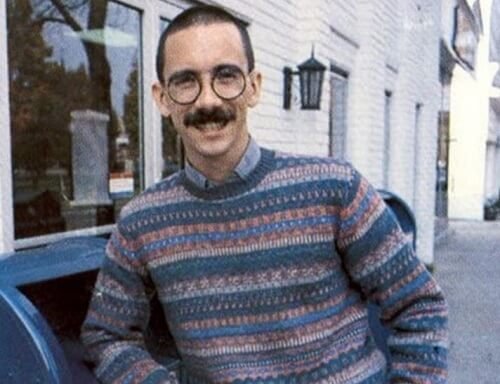In this article, here is the full details of Bill Watterson about wiki, biography, date of birth, birthplace, zodiac sign, nationality, hometown, age, height, weight, father, mother, family, girlfriend, wife, relationship status, children, profession, education, career, net worth, facts, Wikipedia, and many more.

Bill Watterson is one of the most iconic cartoonists of the modern era, best known for creating Calvin and Hobbes, a comic strip that became a cultural phenomenon. Watterson’s comic strip ran from 1985 to 1995, but it continues to have a lasting impact on both the comic strip medium and popular culture as a whole. His distinctive art style, deeply philosophical themes, and refusal to commercialize his characters have cemented his place as one of the most respected and influential cartoonists in history. This article delves into the biography and life story of Bill Watterson, examining his early years, career, philosophy, and legacy.
Early Life and Background
Bill Watterson was born on July 5, 1958, in Washington, D.C. His father, James Watterson, was a patent examiner at the U.S. Patent Office, and his mother, Colleen, was a homemaker. The Watterson family moved to Chagrin Falls, Ohio, when Bill was a young child. Growing up in suburban Ohio, Watterson was exposed to the small-town life that would later inspire much of his work, especially Calvin and Hobbes, which often featured idyllic scenes of childhood and the imaginative adventures of a young boy.
From a young age, Watterson showed an aptitude for drawing. He was not particularly a standout student in other subjects, but his love for art and storytelling began to develop early. He was particularly influenced by his mother, who encouraged his creativity, and his father, who often had a keen interest in philosophy and history, subjects that would later find their way into Watterson’s comics. Though Watterson did not have formal art training, he displayed a natural talent for drawing, which he honed by reading comics and practicing on his own.
Watterson attended Chagrin Falls High School, where he was known for his wit and sense of humor. While his classmates may not have immediately recognized his artistic talent, Watterson was already refining his distinctive drawing style. After high school, Watterson enrolled at Kenyon College, a liberal arts school in Gambier, Ohio, where he studied political science. His decision to pursue political science, rather than fine arts, is often cited as part of his desire to maintain a practical career path, though his love for art never waned.
At Kenyon, Watterson was the editorial cartoonist for the college newspaper, where he started to experiment with his art style. His college cartoons were often political in nature, but they also exhibited a wit and imagination that would later characterize Calvin and Hobbes. During this time, Watterson was influenced by the works of other cartoonists, such as Charles Schulz, creator of Peanuts, and the legendary duo of Walt Kelly and Pogo. His college years served as the foundation for the unique comic strip that would emerge a few years later.
After graduating from Kenyon in 1981, Watterson tried his hand at various jobs in the world of comic strips and illustration, although these early years were marked by frustration. He spent several years submitting his work to various comic syndicates, only to face rejections. His big break finally came in 1984 when he was hired by the Universal Press Syndicate to create a comic strip. It was during this period that Watterson developed Calvin and Hobbes, which would forever change his life and the landscape of American comic strips.
The Birth of Calvin and Hobbes
Calvin and Hobbes made its debut on November 18, 1985, with Watterson’s unique style and storytelling immediately standing out from the more conventional comic strips of the time. The strip revolved around the adventures of Calvin, a six-year-old boy with a vivid imagination, and his stuffed tiger, Hobbes, who Calvin believes comes to life. Together, the pair embarked on whimsical adventures, whether it was exploring the cosmos, engaging in philosophical debates, or simply playing in the snow.
Watterson’s inspiration for Calvin and Hobbes came from a combination of personal experiences and his passion for childlike imagination. Calvin, with his endless curiosity and boundless creativity, represented the part of Watterson that longed to explore the world through a lens of wonder. Hobbes, Calvin’s companion, served as the foil to Calvin’s personality, providing a voice of reason, humor, and sarcasm. Watterson’s own childhood in Ohio, with its combination of suburban monotony and moments of joy and adventure, provided a rich backdrop for the strip’s content.
In the early years of the strip, Watterson’s art style was simple but expressive. His drawings were imbued with humor and exaggerated emotion, while the characters of Calvin and Hobbes were drawn with simple yet highly distinctive features. The humor of Calvin and Hobbes was often sophisticated, combining slapstick, irony, and biting social commentary. Watterson was able to blend whimsical, childlike storytelling with thought-provoking and sometimes deeply philosophical themes that resonated with both children and adults. The strip’s focus on imagination, friendship, and the absurdity of life appealed to readers of all ages.
The character of Calvin was mischievous, curious, and often prone to moments of rebellion. He represented the idealized childhood freedom, the kind of carefree spirit that was bound to confront the norms of adult society. Hobbes, Calvin’s tiger, was the voice of reason but also the source of much of the humor in the strip. Hobbes could be a playful partner in Calvin’s imagination, but he was also a pragmatic and sometimes sarcastic foil to Calvin’s more wild-eyed idealism.
The Unlikely Success of Calvin and Hobbes
In just a few years, Calvin and Hobbes became a massive success, appealing to millions of readers worldwide. The strip was syndicated in over 2,400 newspapers across the globe, and it became one of the most beloved comic strips of all time. The characters, especially Calvin, became cultural icons, with fans adopting the mischievous boy and his tiger as their own.
One of the key reasons for Calvin and Hobbes’ success was its ability to balance humor with deeper themes. Watterson’s strip often explored topics like childhood, growing up, the nature of adulthood, the impact of society, and even environmentalism. Calvin and Hobbes would often embark on fantasy adventures that tackled complex subjects like the meaning of life, the human condition, and existential questions—all through the lens of a child’s imagination. This depth set Watterson apart from many other comic strip creators, allowing his work to appeal to a wide variety of readers.
Watterson’s refusal to compromise his artistic integrity was also a defining feature of the comic’s success. Unlike other popular comic strips of the time, Watterson consistently rejected merchandising opportunities for Calvin and Hobbes. This decision was rooted in his desire to preserve the integrity of his characters and the strip’s content. Watterson was adamant that Calvin and Hobbes would not become part of a mass commercial enterprise, which included licensing the characters for toys, cartoons, or even T-shirts. His resistance to commercialization became one of the defining aspects of the Calvin and Hobbes legacy.
The End of Calvin and Hobbes
In 1995, after 10 successful years, Watterson made the shocking announcement that he would be ending Calvin and Hobbes. The decision was a deeply personal one, and Watterson later explained that he had grown tired of the daily grind of producing the strip and felt that it had run its course. By this time, Calvin and Hobbes had achieved tremendous popularity, and Watterson was in a position where he could have continued the strip for many more years. However, he chose to leave the strip at the peak of its success, wanting to go out on his own terms.
The final Calvin and Hobbes strip was published on December 31, 1995. It featured Calvin and Hobbes heading out into the snow, with Calvin exclaiming, “It’s a magical world, Hobbes, ol’ buddy… Let’s go exploring!” This bittersweet ending, with its perfect mixture of wonder and sadness, captured the essence of the comic strip—childhood, friendship, and the inexorable passage of time.
Watterson’s departure from the world of syndicated comics left a void that has never quite been filled. Fans of Calvin and Hobbes continue to cherish the strip, and Watterson’s work remains a major influence on cartoonists and comic creators to this day.
Post-Calvin and Hobbes Life and Legacy
After ending Calvin and Hobbes, Watterson largely retreated from the public eye. He chose to live a private life, avoiding interviews and the public spotlight. Though he occasionally gave interviews and made public appearances, Watterson kept a low profile, choosing instead to focus on his personal life and interests.
Watterson’s legacy as a cartoonist, however, remains undeniable. Calvin and Hobbes continues to be one of the most widely syndicated comic strips in history, and the collection of Calvin and Hobbes books have sold millions of copies worldwide. The strip’s impact on popular culture is immeasurable, and its influence can be seen in a wide variety of works, from other comic strips to literature and film.
In recent years, Watterson has occasionally returned to the world of comics in limited forms. In 2014, he collaborated with cartoonist John Kascht to create illustrations for the book The Calvin and Hobbes Tenth Anniversary Book. Watterson also gave his first interview in years in 2014, where he reflected on his time creating Calvin and Hobbes and his decision to retire from the world of comic strips.
Conclusion
Bill Watterson’s contribution to the world of comics is profound and lasting. Through Calvin and Hobbes, he created a comic strip that became a beloved part of the cultural landscape. His work is a testament to the power of art and storytelling, and his refusal to commercialize his creations has earned him the respect of both fans and fellow creators. Watterson’s legacy will continue to inspire generations of artists and readers, and his comics will forever be remembered for their depth, humor, and heart.
Stay connected with the wikimavani to know more about other trending personalities the wiki, biography, date of birth, birthplace, zodiac sign, nationality, hometown, age, height, weight, father, mother, family, boyfriend, husband, girlfriend, wife, relationship status, children, profession, education, career, net worth, facts, Wikipedia, and many more.









